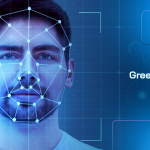
Swiss company FinalSpark is leading the charge in biocomputing with the earlier launch of its “Neuroplatform,” a computer platform powered by human brain organoids that can be rented over the Internet.
Biocomputing has recently garnered attention as concerns over the demands of artificial intelligence (AI) for data storage and energy continue to grow. FinalSpark seeks to provide an environmentally sustainable solution for that through its living computers, which can be used to train AI with less power requirement.
“Our principal goal is artificial intelligence for 100,000 times less energy,” FinalSpark co-founder Fred Jordan said. The company is the first in the world to offer human-brain organoids on a publicly rentable platform for $500 a month.
The organoid technology
The technology behind Neuroplatform involves a series of processing units containing four spherical brain organoids. Twin setups are organized to train the organoids’ neurons, enabling them to develop new pathways and connections similar to how a real human brain works.
The first setup involves electrical stimulation from eight electrodes attached to every 0.5-millimeter-wide organoid. The electrodes also connect the organoid to traditional computer networks.
The other setup resembles the brain’s natural reward system by selectively exposing the neurons to the feel-good neurotransmitter dopamine.
FinalSpark hopes this training approach will allow organoids to mirror silicon-based AI and function like modern central and graphic processing units.
Currently, anyone can observe the organoids and their behavior in the 24/7 live stream available online. More work remains to be done for this technology, as the Swiss company is still finding “the appropriate way to get neurons to do what we want them to do.”
Remaining challenges
Besides training issues, organoids also face challenges in terms of computing ability on a large scale. So far, no standardized manufacturing system is available to economically and efficiently mass-produce organoids.
Moreover, while a significant achievement compared to initial experiments, FinalSpark’s organoids have a lifespan of only around 100 days. However, the company explained that Neuroplatform currently has between 2,000 and 3,000 organoids in store from its “streamlined” in-house process.
Collaborations with academia
Amid these difficulties, FinalSpark is collaborating with scientists in the academe.
Of the research teams from 43 universities that have requested access to its biocomputers, the company is working with the University of Michigan, the Free University of Berlin, and seven other institutions on projects related to biocomputing.
The team from the University of Michigan is exploring electrical and chemical prompts to create the building blocks of an organoid-specific computer language. Meanwhile, researchers from Lancaster University Leipzig in Germany are integrating organoids into different AI learning models.
Other flavors of biocomputing
“There are different flavors of biocomputing,” noted Ángel Goñi-Moreno, a researcher at the National Center for Biotechnology in Spain. Unlike FinalSpark, Goñi-Moreno investigates cellular computing, wherein he uses modified living cells to replicate “memory, logic gates, and the other decision-making basics we know from conventional computer science.”
He is a major proponent of “cellular supremacy,” which views that cellular computers could be useful in certain domains where conventional computers are rendered useless. Specifically, his interests include applying cellular computers to bioremediation or the restoration of damaged ecosystems.



![11 Best AI Video Generators for [current_date format='Y']: Create Stunning AI Videos 4 Best AI Video Generator](https://www.greenbot.com/wp-content/uploads/2025/03/Best-AI-Video-Generator-150x150.png)















